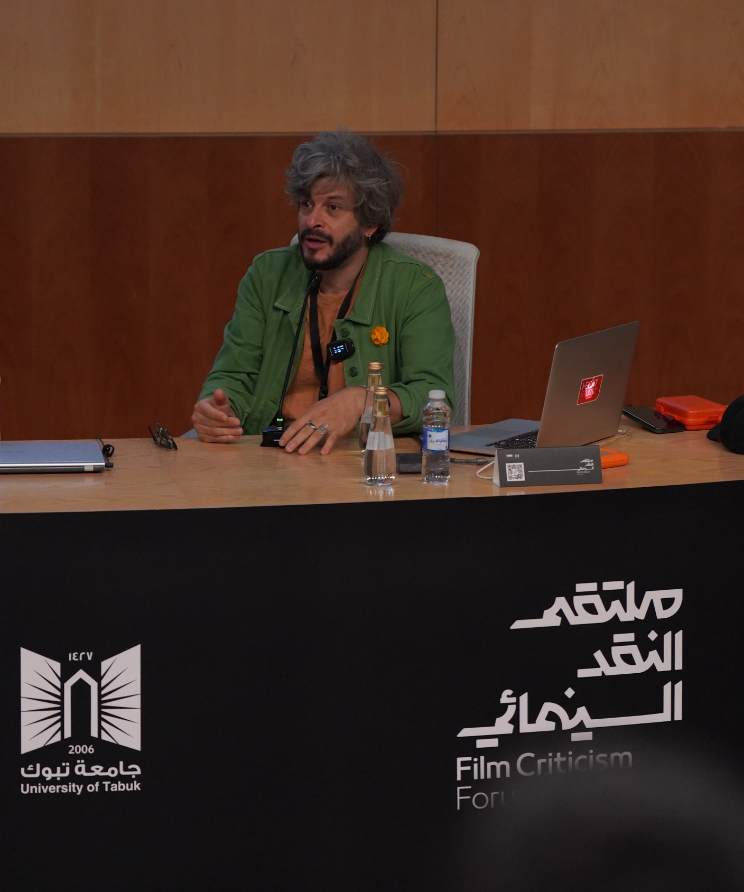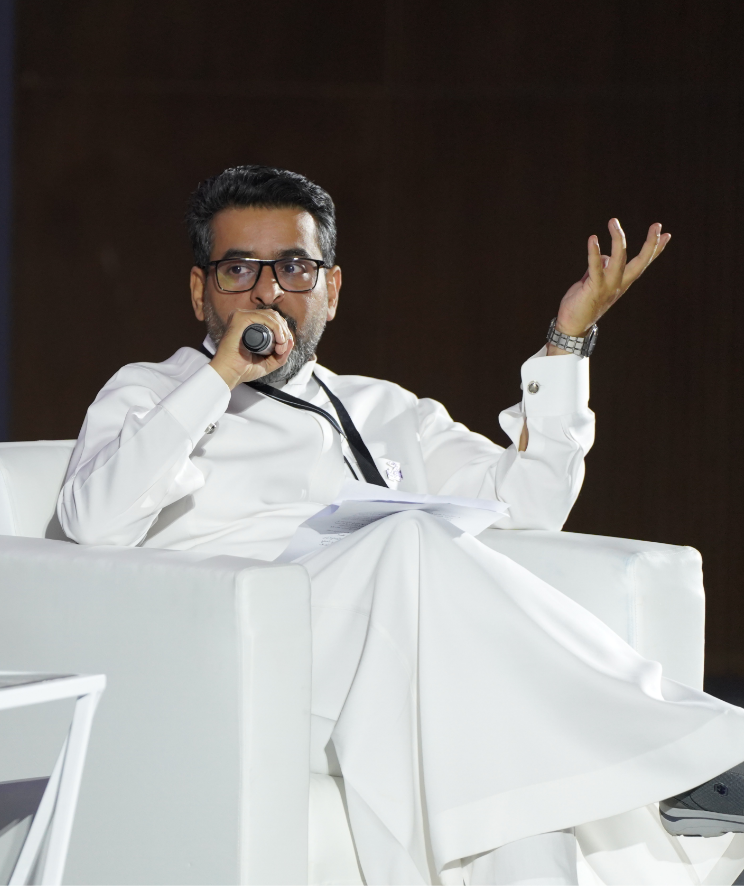

In the century and a half since their invention, moving images and related technologies have steadily innovated, creating a problem of obsolescence. Before 4K, movies were shot in 35mm, 16mm, and 8mm analog, copies of which we often can no longer access. The precious few who actually understood how to program a VCR could enlighten the rest of us—then the ubiquitous black boxes wound up in junk sales and garbage bins. Users of basic flip phones would never have imagined making movies on our snazzy smartphones—and some still can’t.
Indeed, as the pace of technological advancement accelerates, more and more of us find ourselves falling behind, wondering where to find the manuals and worried that we will stumble and fall out-of-date and outmoded, wind up as obsolete and antiquated as an old gadget. As smart buildings, smart cities (like Neom nearby), and new forms of film and media emerge around us, we are both fascinated by and fearful of innovations such as artificial intelligence making judgments and decisions for us. Will we lose the ability to follow through on our own intentions as ChatGPT writes our future film scripts and spellcheckers eagerly complete words as we type them? What happens when the innermost workings of our society are understood only by the technopriesthood and we fall in love with our Siris and Alexas, as in the Hollywood film Her? Will we ever catch up?
In this program, we pay homage to the films and filmmakers who satisfy our endless thirst for futuristic speculation, and to the technologies that facilitated all that has come before. We underscore cinema’s own machinations, from 35mm to immersive VR, that brought us to the place we are now, in the present and looking into the future of constant change.

Visual effects (VFX) can showcase the aesthetic and essential details of the narrative of a film, helping to convey a director’s viewpoint, emotions, and ideas. Often, VFX are considered a kind of computer-generated magic, but when they are not used correctly, they can actually weaken the work and spoil the aesthetics so that scenes look unrealistic or the effects contradict what is actually happening. These bad outcomes are often due to a lack of understanding about how VFX work, inadequate preparation for using them, and uncertainty about how much budget to allocate.
The workshop explored the absence of visual effects in Arab cinema and highlighted the opportunity to leverage the rich cultural, historical, and storytelling heritage in filmmaking. Finally, VFX was compared against artificial intelligence (AI), which, Abo stressed, could not replace the screenwriter, actor, or voiceover artist, as AI lacks the capacity for innovation and the emotional and critical intelligence that cinema requires.

Dr. Nehal El-Hadi, Science & Technology Editor, The Conversation Canada, and Editor in Chief, Studio
Filmmakers have made great technical progress in depicting wind, water, sand, and fire through digital images. Illustrated in a series of films that portray how environmental disasters have a significant impact on our reality. The movie The Perfect Storm (2000) used computer-generated water-imaging technology to create highly realistic water scenes. Partially inspired by a massive fire in Canada, the director of the 1991 film Backdraft hired a dedicated team of technicians to create the fire effects for the story. As for the desert, which is generally devoid of life and natural features, was rendered in the 2021 film Dune through “sand screen” backdrops instead of the usual blue or green screens, along with sand explosion tools and a 3D program that renders realistic sand.
Overall, VFX can play a pivotal role in conveying the urgency of climate change, as they allow us to witness the destructive power of wildfires, rising sea levels, and other environmental crises, in a safe and impactful way, while raising awareness and fostering a deeper connection with our changing world.

Dr. Rania Gaafar, Researcher and Lecturer, University of Arts Bremen
The birth of cinematic projection devices was driven in part by our innate desire to capture the essence of our daily lives and transform static images into dynamic motion, to better reflect real life. Images possess a unique ability to narrate the struggles and triumphs of others, transport us across the boundaries of time and space to relive cherished memories, or immerse us in futuristic realms as imagined by science fiction—as in, for example, the spectacular images of the new city The Line.
New technologies have brought forth an enormous change in filmmaking. Artificial intelligence, for example, lets us see an image in 360 degrees, which was previously impossible. Dr. Gaafar concluded with the assertion that when it comes to depicting time, images deserve to be on equal footing with language, rather than being reduced to a secondary role, given their ability to depict the past and imagine the future.

Dr. Nehal El-Hadi & Dr. Rania Gaafar conversation moderated by Dr. Livia Alexander
The panel discussion focused on images: their importance, their influence, and the various ways they are used. The persuasive power of images, according to Dr. Gaafar, comes from the fact that the emotions of imaginary movie characters can be transferred into actual people in reality. Dr. El-Hadi spoke about how images originate on the screen, and that rather than this being a limitation, it actually enhances the virtual aspect of our lives and expands its role.
When asked to what extent movies in particular and the virtual world in general have an effect on our feelings, Dr. Gaafar pointed to video games, and how when people spend long hours playing, they gradually come to feel as if they are moving within the game and their connection to reality weakens.
As for whether virtual reality can influence cognitive perception, and not just feelings, Dr. El-Hadi answered that this influence goes beyond what we can perceive and understand. She cited as an example the events of September 11, and how some people describe what they witnessed and experienced that day as being “like something out of a movie.” People made this comparison, she explained, because it was a massive and terrifying event that had never been seen in the real world, so virtual reality became a reference point instead.

Technology has made a grand entrance into cinema, leaving an unforgettable mark on storytelling, aesthetic values, and creativity. Artists and filmmakers have swiftly harnessed these technological advancements, pushing the boundaries of innovation with each passing day. In this context, Saudi artist Ahaad Alamoudi presented a selection of images from her own work that illustrate how she uses technology in her artistic practice. . When asked about the importance of visual language as a medium for art, she affirmed that it is a vital tool for conveying information clearly and precisely, though it depends on how much the viewer comprehends the message in the images. The power of images, Alamoudi added, lies in their creation; when that power is fully realized in a perfect image, the viewer can grasp its message effortlessly.

Cinephiles still debate the meaning of the 1982 film Blade Runner, and some filmmakers have even redirected the film in an attempt to explore its varied connotations. This sci-fi masterpiece delves into the future, exploring a time when humanity has pushed the boundaries of technology, giving rise to lifelike humanoid robots.
The story unfolds in the year 2019—that is, in the future, relative to when the film was made—in two distinct realms: the city of Los Angeles, and the space colonies. While Los Angeles is a city of technology and industry, inhabited largely by the poor, the “off-world” colonies, on another planet, are where the wealthy live, assisted by artificial humanoids. These genetically modified beings were created to colonize space, but they become aware of the constraints on their lives, and so return to Earth, where it is more difficult to distinguish them from people. The narrative revolves around our protagonist, Rick Deckard, and his work within a specialized law enforcement unit tasked with tracking down and 'retiring' these rogue creations that defy their corporate creators. Amidst this intricate landscape, distinguishing between humans and these synthetic entities becomes an enigmatic challenge.

This Bloggers Panel shed light on Blade Runner’s profound impact on cinema in the 1980s. The film ignited cinematic imagination by portraying humanity as machinery. Dr. Alokiby dismissed the notion that the film's primary aim was to envision the future or contemplate it. Instead, he emphasized, the work's deep-rooted philosophical dimension and discourse is intended to remind humanity of its essence in the present. <br><br> Professor Mohammed pointed out how the film does provide glimpses of the future, however: By drawing inspiration from Japanese and Chinese writings and infusing them with Arabic and Indian music, it suggests that future cities will not have one single identity. And although the director only barely references the plot of the novel on which it is based— Do Androids Dream of Electric Sheep?, by Philip K. Dick—the film is nonetheless rich in the same philosophical and existential themes, such as immortality and the instinct for power.
Get In Touch
تواصل معنا
